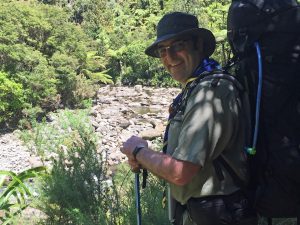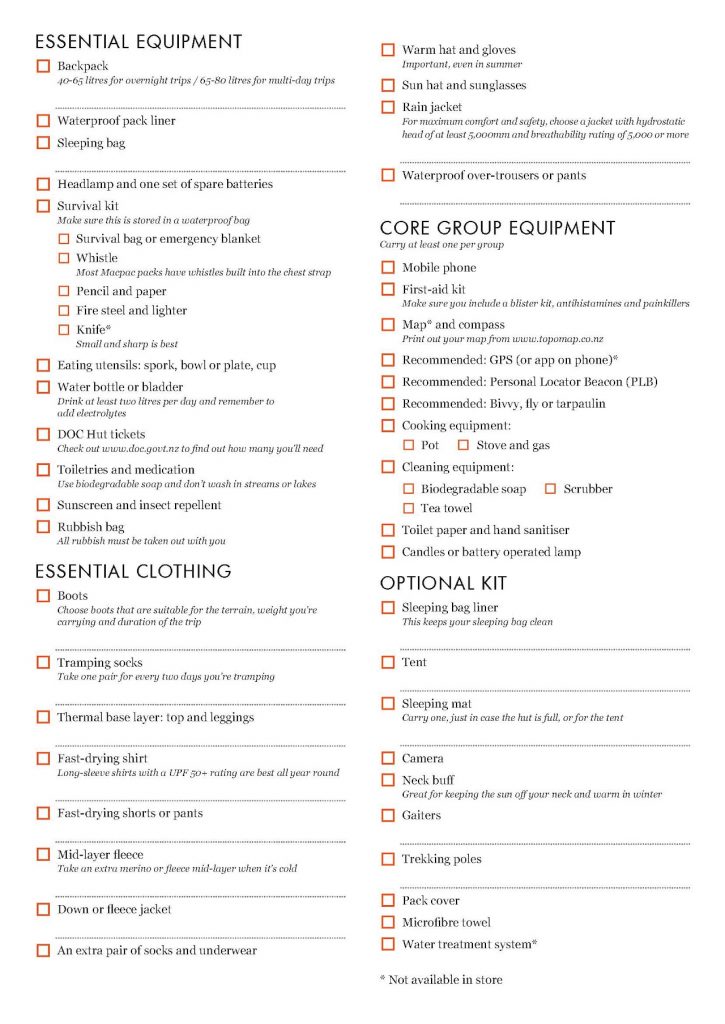Tramping Camp Gear List
 Outdoor Safety Code
Outdoor Safety CodeEvery trip needs a plan, even a short day walk. If you’ve adequately planned before you hit the track, there’s a good chance you’ll be prepared to handle an unexpected turn of events. Regardless of the level of activity or intensity, each of these steps can help you to be prepared for what you might encounter in the outdoors.
Plan your trip
Seek local knowledge, plan the route you will take, who you will be with, the amount of time you can reasonably expect it to take, where you can stay at night if need be, and assess any potential hazards.
Plan your trip with your group members so everyone understands the itinerary, right from the get-go.
Tell someone your plans
- Tell someone your plans and leave a date for when to raise the alarm if you haven’t returned.
- Because many outdoors locations are remote and have no mobile phone coverage, if something does go wrong the only way emergency services can help you is if they know you haven’t returned. Tell a trusted family member or friend, even if they’re overseas.
- Be sure to also let them know once you’ve returned!
Be aware of the weather
- Weather conditions can quickly catch out the unprepared. Check the forecast as well as any weather watches and warnings for your region. Always check the mountain and rural forecasts for the region you’re going to, as they can be quite different to an urban forecast for a major town or city.
- When you’re going out you must consider what effects the weather will have on your trip. If the weather does change for the worse, you need to decide if it’s significant enough to alter your plans.
- Keep an eye on the long range forecast and don’t hesitate to reschedule a trip if the weather looks scratchy.
- If the weather forecast isn’t favourable or you encounter poor weather while out, consider the following:
- Staying an extra night
- Changing your route to avoid river crossings, avalanche routes, and exposed ridgelines
- Heading home and planning to return another time.
Know your limits
- Challenge yourself within your physical limits and experience
- There are many different types of tracks – from high quality easy paths with clear track markers, to very challenging routes with no track or markings. Before you go, make sure you’ve selected a hike or walk that’s suitable for you and your group.
- When planning a group activity, ensure it’s at everyone’s skill level, and that you’ve got the right equipment for the journey.
Take sufficient supplies
- Make sure you have enough food, equipment, and emergency rations for the worst-case scenario. Take an appropriate means of communication.
- Always test your equipment before you leave.
- For more information see the New Zealand Mountain Safety Council website


